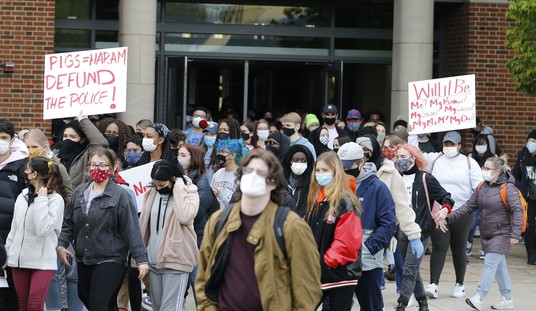America’s police departments are rebounding from the hiring shortages they experienced amid the COVID-19 pandemic and the George Floyd riots. After a season of resignations and other difficulties involved in retaining officers, it appears that hiring is once again on an upward trend.
The Police Executive Research Forum (PERF) published the findings of a survey showing that the era of understaffed police agencies might be coming to an end.
This development comes after a sharp rise in resignations and relocations of police officers over recent years.
More sworn officers were hired in 2023 than in any one of the previous four years, and fewer officers overall resigned or retired, according to the 214 law enforcement agencies that responded to a survey by the Police Executive Research Forum, or PERF.
Floyd’s death at the hands of Minneapolis police officers spurred nationwide protests against police brutality and heightened scrutiny of law enforcement.
As more and more officers left, many of the departments had to redeploy stretched resources by shifting officers away from investigative work or quality of life issues such as abandoned vehicles or noise violations to handle increases in crime and, in some cases, the shortages meant slower response times or limiting responses to emergencies only, police officials say.
“I just think that the past four years have been particularly challenging for American policing,” said Chuck Wexler, executive director of PERF, a nonprofit policing think tank based in Washington, D.C. “And our survey shows we’re finally starting to turn a corner.”
The report notes that first the first time since the COVID-19 outbreak, “agencies reported a year-over-year increase in total sworn staffing” and that “retirements dropped back down to roughly where they were in 2019 after being elevated for the previous three years.”
The staffing issue became so pronounced that “small towns unable to fill jobs are eliminating their police departments and turning over police work to their county sheriff, a neighboring town or state police,” according to a 2023 report.
At least 521 U.S. towns and cities with populations of 1,000 to 200,000 disbanded policing between 1972 and 2017, according to a peer-reviewed 2022 paper by Rice University Professor of Economics Richard T. Boylan.
In the past two years, at least 12 small towns have dissolved their departments.
While the hiring shortages issue appears to be abating, there are still issues in smaller departments, according to Wexler, who also pointed out that these agencies make up 80 percent of police departments nationally.
The organization notes that many departments have addressed the staffing issue by revamping their hiring processes.
Wexler believes some of those changes make sense, including allowing visible tattoos, reweighing the importance of past financial issues and processing applicants’ background checks faster. But he cautioned that PERF does not support lowering standards for training or for applicants.
Maria “Maki” Haberfeld, chair of the Department of Law, Police Science and Criminal Justice Administration at John Jay College of Criminal Justice, says departments have been too focused on officer numbers. She worries some are lowering education requirements and other standards to bolster numbers instead of trying to find the best people to police their communities.
“Policing is a real profession that requires more skills and more education than people can understand,” she said. “It’s not about tattoos or running a mile in 15 minutes. It’s really more about emotional intelligence, maturity and making those split-second decisions that don’t use deadly force.”
This development comes as violent crime rates, while still considerably higher than five years ago, are on the decline. It is not yet clear whether the easing of the hiring shortage problem has had an impact on crime rates.














Join the conversation as a VIP Member